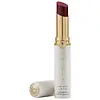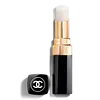What's inside
What's inside
 Key Ingredients
Key Ingredients

 Benefits
Benefits

 Concerns
Concerns

 Ingredients Side-by-side
Ingredients Side-by-side

Ethylhexyl Salicylate 4.7%
UV AbsorberZinc Oxide 15%
Cosmetic ColorantTriethylhexanoin
MaskingDiisostearyl Malate
EmollientSynthetic Wax
AbrasivePolybutene
Glyceryl Diisostearate
EmollientCandelilla Cera
EmollientEthylhexylglycerin
Skin ConditioningPhenoxyethanol
PreservativeGlyceryl Diisostearate/Hydrogenated Rosinate
Skin ConditioningHydrolyzed Silk
HumectantTocopherol
AntioxidantSilica
AbrasiveCI 73360
Cosmetic ColorantCI 19140
Cosmetic ColorantCI 77499
Cosmetic ColorantCI 77891
Cosmetic ColorantEthylhexyl Salicylate 4.7%, Zinc Oxide 15%, Triethylhexanoin, Diisostearyl Malate, Synthetic Wax, Polybutene, Glyceryl Diisostearate, Candelilla Cera, Ethylhexylglycerin, Phenoxyethanol, Glyceryl Diisostearate/Hydrogenated Rosinate, Hydrolyzed Silk, Tocopherol, Silica, CI 73360, CI 19140, CI 77499, CI 77891
Bis-Behenyl/Isostearyl/Phytosteryl Dimer Dilinoleyl Dimer Dilinoleate
EmollientPhytosteryl/Octyldodecyl Lauroyl Glutamate
Skin ConditioningPentaerythrityl Tetraethylhexanoate
EmollientDiisostearyl Malate
EmollientCaprylic/Capric Triglyceride
MaskingSqualane
EmollientIsotridecyl Isononanoate
EmollientSynthetic Wax
AbrasiveEthylene/Propylene Copolymer
AbrasiveMeadowfoam Delta-Lactone
Skin ConditioningSorbitan Isostearate
EmulsifyingLauryl PCA
HumectantTocopheryl Acetate
AntioxidantParfum
MaskingSilica
AbrasiveTocopherol
AntioxidantAlumina
AbrasiveCI 77891
Cosmetic ColorantMica
Cosmetic ColorantBis-Behenyl/Isostearyl/Phytosteryl Dimer Dilinoleyl Dimer Dilinoleate, Phytosteryl/Octyldodecyl Lauroyl Glutamate, Pentaerythrityl Tetraethylhexanoate, Diisostearyl Malate, Caprylic/Capric Triglyceride, Squalane, Isotridecyl Isononanoate, Synthetic Wax, Ethylene/Propylene Copolymer, Meadowfoam Delta-Lactone, Sorbitan Isostearate, Lauryl PCA, Tocopheryl Acetate, Parfum, Silica, Tocopherol, Alumina, CI 77891, Mica
Alternatives
Ingredients Explained
These ingredients are found in both products.
Ingredients higher up in an ingredient list are typically present in a larger amount.
Ci 77891 is a white pigment from Titanium dioxide. It is naturally found in minerals such as rutile and ilmenite.
It's main function is to add a white color to cosmetics. It can also be mixed with other colors to create different shades.
Ci 77891 is commonly found in sunscreens due to its ability to block UV rays.
Learn more about CI 77891Diisostearyl Malate is an emollient and most often used in lip products. It comes from isostearyl alcohol, a fatty acid, and malic acid, an AHA.
As an emollient, Diisostearyl Malate helps create a thin film on your skin to trap moisture in. This helps keep your skin soft and smooth.
Silica, also known as silicon dioxide, is a naturally occurring mineral. It is used as a fine, spherical, and porous powder in cosmetics.
Though it has exfoliant properties, the function of silica varies depending on the product.
The unique structure of silica enhances the spreadability and adds smoothness, making it a great texture enhancer.
It is also used as an active carrier, emulsifier, and mattifier due to its ability to absorb excess oil.
In some products, tiny microneedles called spicules are made from silica or hydrolyzed sponge. When you rub them in, they lightly polish away dead skin layers and enhance the penetration of active ingredients.
Learn more about SilicaSynthetic Wax is created from fossil fuels such as natural gas. It is used to enhance texture, adjust pH, and as an occlusive.
It may also be used as an abrasive ingredient to exfoliate the skin.
Synthetic Wax may not be fungal acne safe.
Learn more about Synthetic WaxTocopherol (also known as Vitamin E) is a common antioxidant used to help protect the skin from free-radicals and strengthen the skin barrier. It's also fat soluble - this means our skin is great at absorbing it.
Vitamin E also helps keep your natural skin lipids healthy. Your lipid skin barrier naturally consists of lipids, ceramides, and fatty acids. Vitamin E offers extra protection for your skin’s lipid barrier, keeping your skin healthy and nourished.
Another benefit is a bit of UV protection. Vitamin E helps reduce the damage caused by UVB rays. (It should not replace your sunscreen). Combining it with Vitamin C can decrease sunburned cells and hyperpigmentation after UV exposure.
You might have noticed Vitamin E + C often paired together. This is because it is great at stabilizing Vitamin C. Using the two together helps increase the effectiveness of both ingredients.
There are often claims that Vitamin E can reduce/prevent scarring, but these claims haven't been confirmed by scientific research.
Learn more about Tocopherol